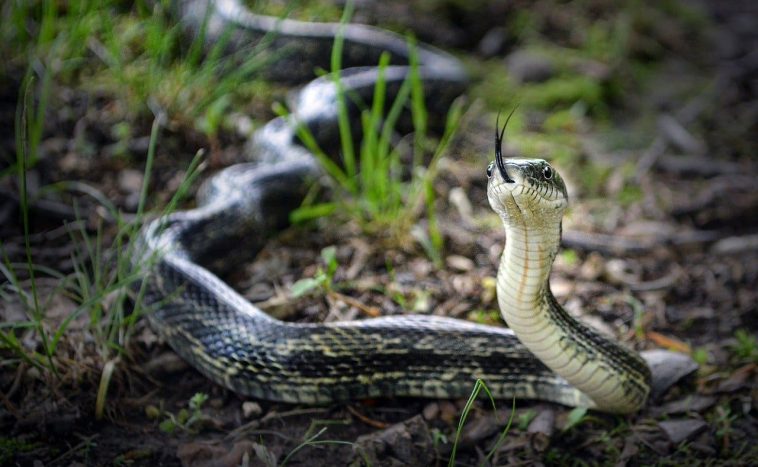Snakes are animal species that can be seen on every continent except Antarctica. There are around 3000 kinds of snakes in the world. The species is cold-blooded which means they used to change colour depending on the temperature of the environment and snakes in colder regions used to hibernate in winter because else would be difficult for them to survive. We will discuss some of the major types of snakes found across the planet.
There are 3,400 individual snake species in the world. All the species has been divided into more than 20 families, howvever, Colubridae, Boidae, Elapidae, Pythonidae and Viperidae are the major ones and rest of them are very small contain only one or two species. The largest one being the Colubridae family which has about 1,900 individual snake species and the all are known as colubrids. Almost all the species in this family are non-venomous but there are few exceptions as well.
The next family comes is Boidae which includes 40 to 45 snake species that are known as boas. The largest and heaviest snake in the world, the green anaconda belongs to this family. All boas snakes are non-venomous but they are powerful constrictors. They kill the prey by its sheer size and power.
Elapidae family of snakes also known as elapids has numerous venomous species such as cobras, mambas, coral snakes and taipans. All the elapids snakes are venomous. Snakes of this family produce neurotoxin which is a type of venom that directly attacks the central nervous systems that is the respiration of their prey.
Pythonidae family has some of the longest snakes in the world that includes the reticulated python of Southeast Asia. All the snakes of this family are known as “pythons, however, there are many individual species keep occurring across the world. The ball python which is one of the most common in the pet trade is also a member of this family.
Viperidae family of snakes also known as viperids includes rattlesnakes, vipers, adders and other species. All the snake species of this family are venomous and almost all the snakes of the United States fall within this family. This includes all rattlesnakes, the copperhead, and the water moccasin. The coral snake which is one of the only venomous snakes in the U.S. All the species of this family produce hemotoxic venom that directly attacks the tissue and blood of the prey. Here is the list of types of snakes in the world,
Types of Snakes
1. King Cobra
King Cobra saw in the forests from India through Southeast Asia. The species is actually only partial noises and sense like ground vibrations else they are deaf to most of the ambient noises. It lives in Southeast Asia and seen mostly in the rainforests of India and southern China, Malaysia, and the Philippines. Talking about the appearance, coloring can vary from region to region where it is yellow and black in India and white and ivory in China. The snake species can reach upto 18 feet (5.5 meters) in length and hence they are the largest among all venomous snakes. KIng cobra weight between 15 to 20 pounds but can reach up to 44 pounds.
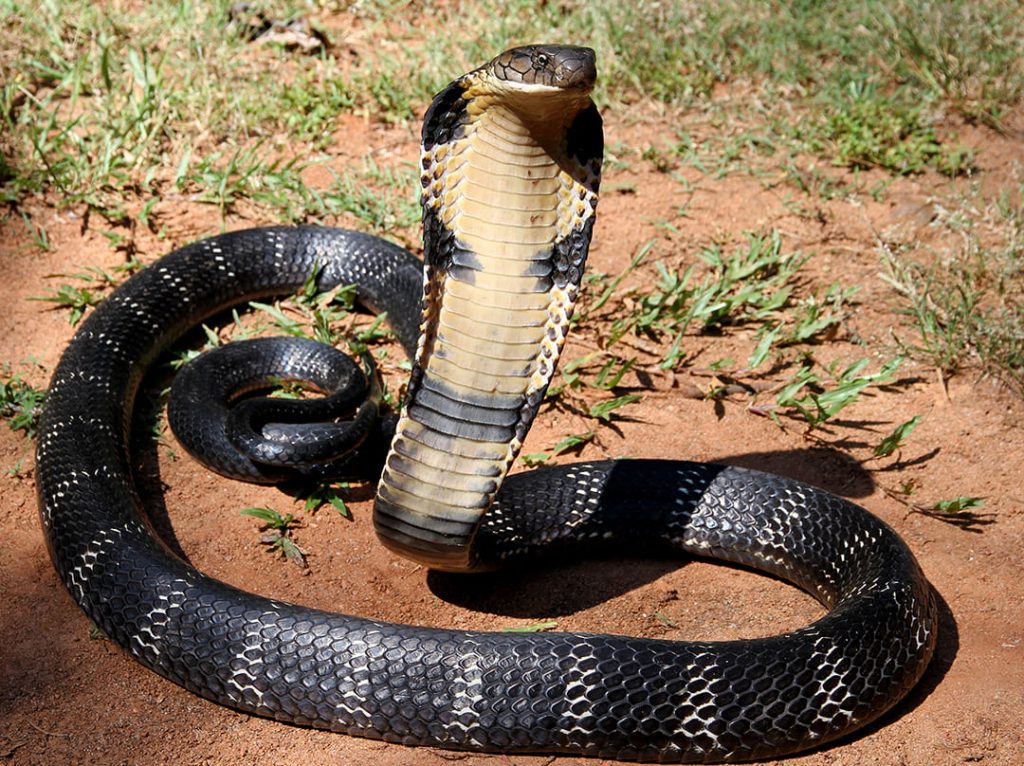
Image Source: Wikimedia
2.Black Mamba
Black Mamba is also one of the major types of snakes which is a member of family Elapidae native to parts of Sub-Saharan Africa. It is mostly seen in the savannas and rocky hills of southern and eastern Africa. It was first defined by Albert Gunther in 1864 and it is listed as second-longest venomous snakes in the world after king cobra. A black mamba can grow upto 4.3 to 4.5 m (14 ft 1 into 14 ft 9 in) and colour appearance can vary from grey to dark brown. Despite being one of the aggressive snake species it usually attacks human only if they are threatened or cornered. It is also listed as one of the deadliest snakes in the world.
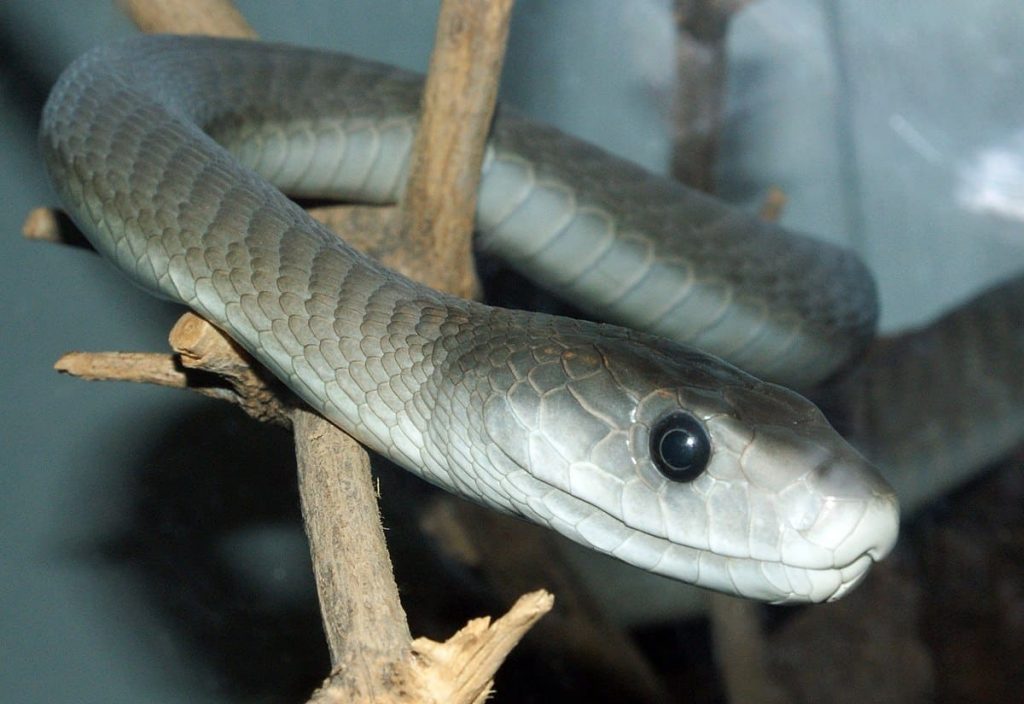
Image Source: Wikimedia
3. Python
One of the largest types of snakes is non-venomous and mostly seen in the tropical areas of Africa and Asia. There are a lot of people who keep this species as pets and just like black mamba, they dont attack humans unless provoked or stressed. Python species are known as constrictors where they kill its prey by squeezing till they stopped breathing. After the kill, snake species used to swallow it one piece and apart from fur and feathers of prey all the other things will be digested. The more the size of the prey, the more time it will take to digest, Python only eats 4 to 5 times a year. They used to attack monkeys, antelopes, caimans and the list goes on. The longest python species is known as Reticulated Python which can reach 30 feet in length.
Also Read: 10 Cutest Reptiles And Amphibians
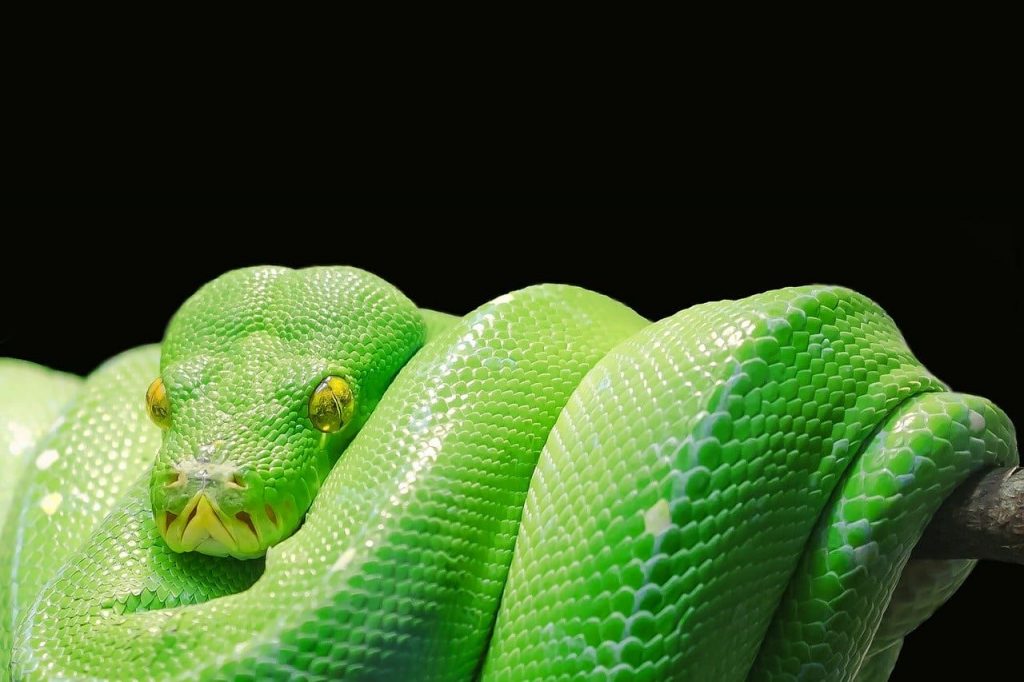
4. Anaconda
Anacondas are the heaviest known snake species native to the tropical rainforests, lakes and swamps of South America. It is a non-venomous snake and used its strong and muscular body to kill its prey. Just like python, it is also a constrictors i.e when prey dies it used to swallow whole prey at once. It can reach upto 30 Ft long and weighs approximately 550 pounds. There are 4 types of Anacondas, howvever, a scientist could not find them easily because they can hide inside the river or water. Humans hunt Anacondas because of their skin which is highly appreciated in the fashion industry. It hunts on the ground but loves to stay inside the water where it can move easily. Anacondas are non-nocturnal animals that hunt at night.
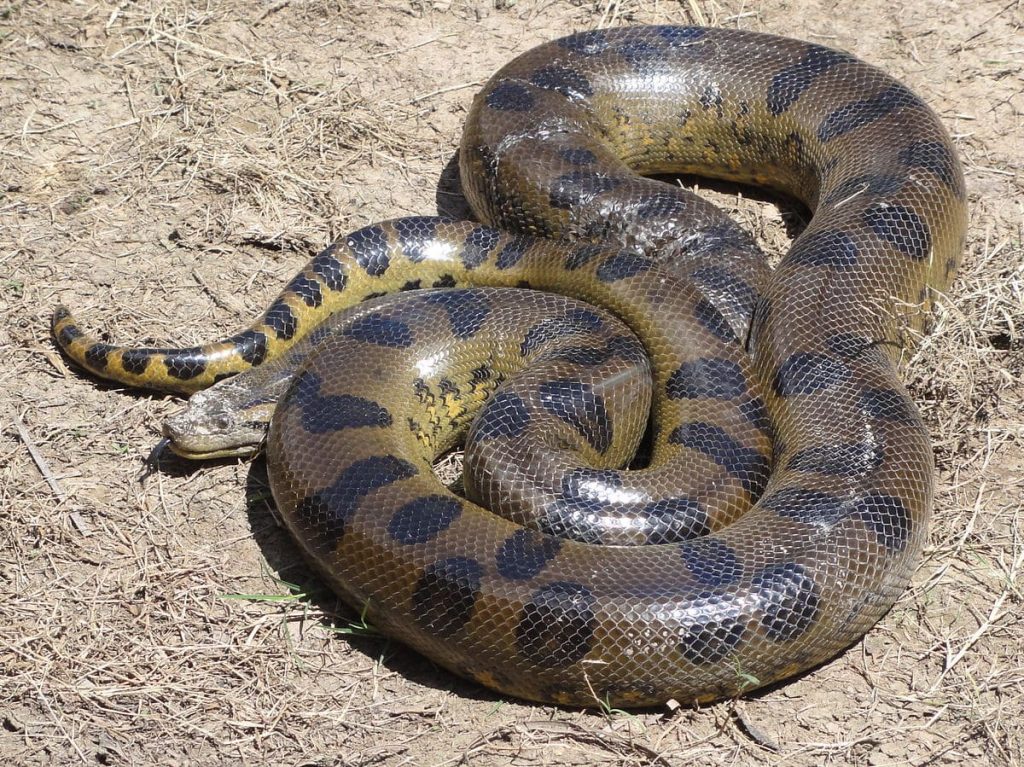
Image Source: Wikimedia
5. Sea Snake
Sea Snakes are one of the types of snakes or group of snakes adapted to the marine life and belong to the family of cobras. It is mostly seen in the Indian and Pacific ocean. It is believed that there are 60 types of sea snakes that can differ in size, colour, type of diet and habitat. The size of the species depends on the species and it is usually 3.9 to 4.9 feet long. The largest sea snake can reach upto 9.8 feet in length. Talking about the appearance, colour and patterns on the body of sea snake depend on different sea snake species, however, some are uniformly colored.Sea snakes can dive up to 300 feet and loves to live in shallow water. They are able to spend up to one hour under the water without returning to the surface to breathe.
Also Read: Top 10 Facts about Snakes
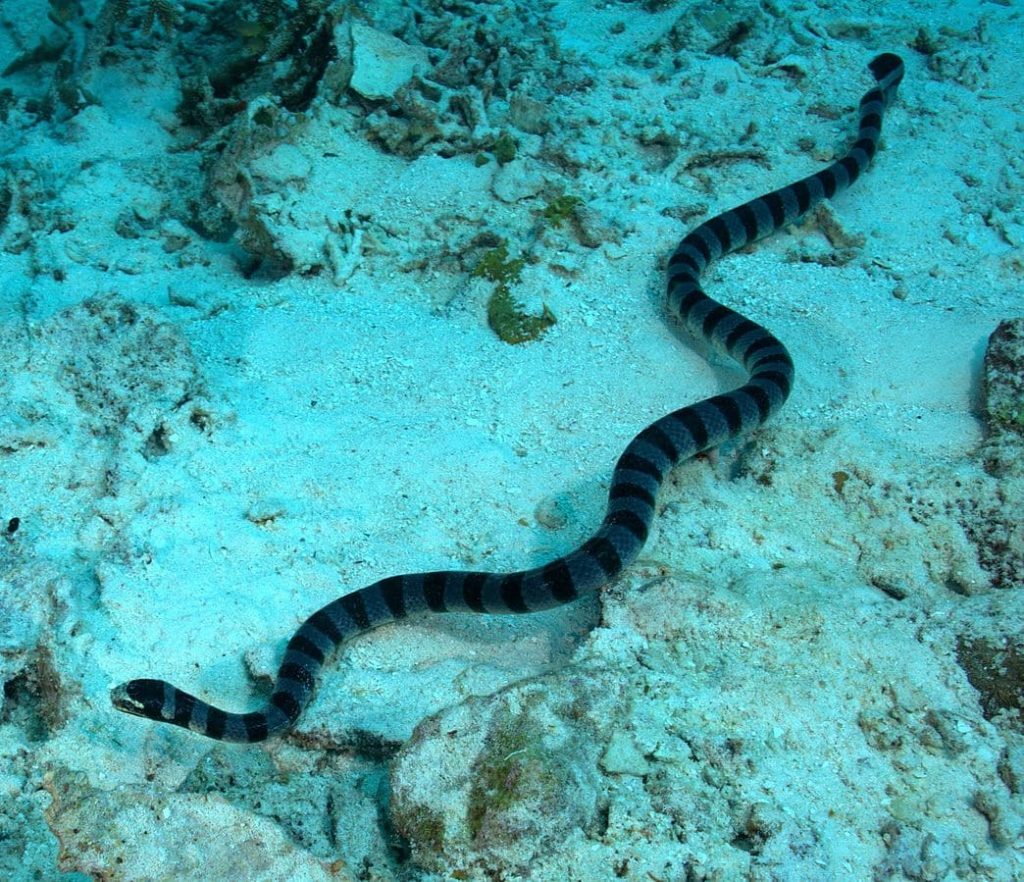
Image Source: Wikimedia
6. Rat Snake
Rat Snake is also a non-venomous snake that belongs to the colubrid family. They are mostly seen in the southeastern and central parts of the USA and Canada. It can reach upto 3 to 6 feet in length and also known as “oak snake” because of the specific markings that resemble the bark of the oak tree. Talking about the appearance, it has a grey body with white throat and chin and pale-coloured belly. They are excellent climbers and loves to climb on the trees and its prey includes small mammals, birds, lizards, frogs and eggs. The natural predators of the species are are hawks, egrets and foxes.
Also Read: Top 10 Animals that Hibernate
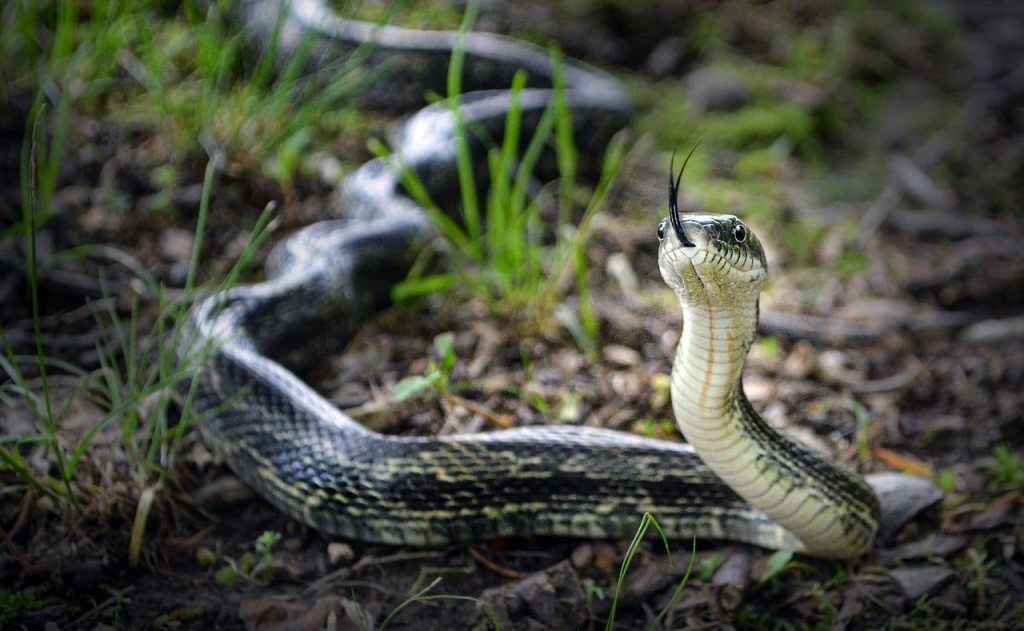
7. Sidewinder
Sidewinder is also known as horn viper or horned rattlesnake and sidewinder rattlesnake is listed as a venomous pit viper species that belong to the genus Crotalus and mostly seen in the desert regions of the southwestern United States and northwestern Mexico. As of now, three subspecies of snakes has been found and all of them measure between 43 and 76 cm where females are larger than males. Talking about the appearance, the colour pattern can be cream, buff, yellowish-brown, pink, or ash grey where the belly is in white colour and the proximal lobe of the rattle is brown in adults.
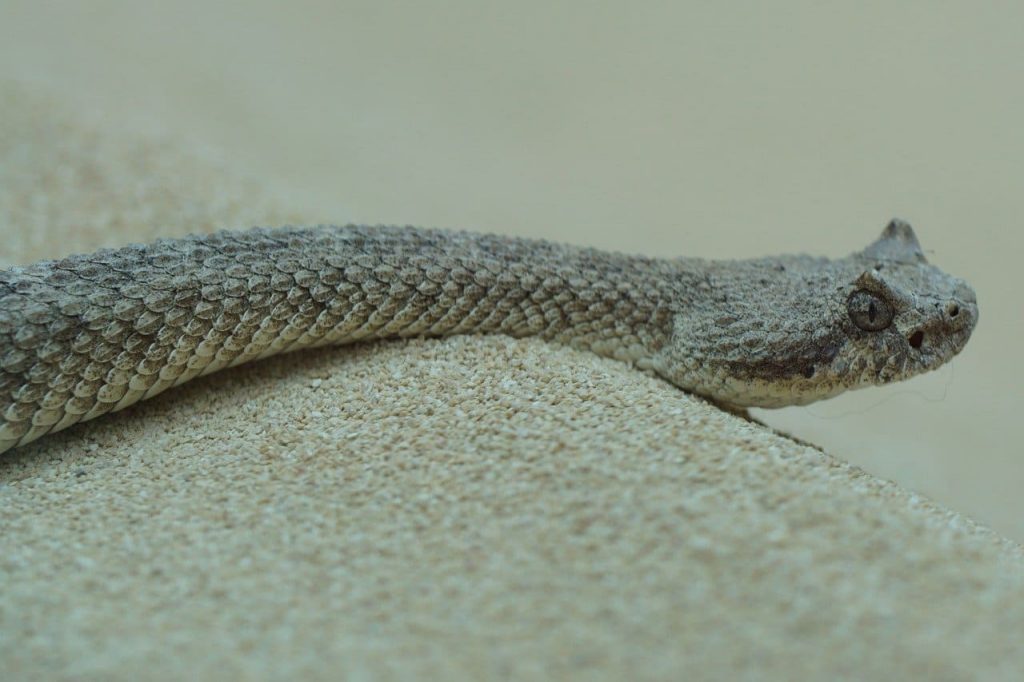
8. Rhinoceros viper
Rhinoceros viper is also known as river jack which is bright coloured venomous snakes belongs to the family Viperidae. It is mostly seen in the inhabits rainforests and swamps of West and Central Africa. The snake species prefer wet or damp environments and can be seen on plantations. Talking about the appearance, the body of the snake is rough and strongly keeled scales. The head is green or blue triangular along with a large black arrowhead mark on the top along with two or three pairs of hornlike scales on the tip of the snout. It can grow upto 70–90 cm (28–35 inches) in length and the body is made up of a velvetlike pattern of triangles, rectangles, and diamond-shaped areas that comes up with colors like red, yellow, blue, green, and black.
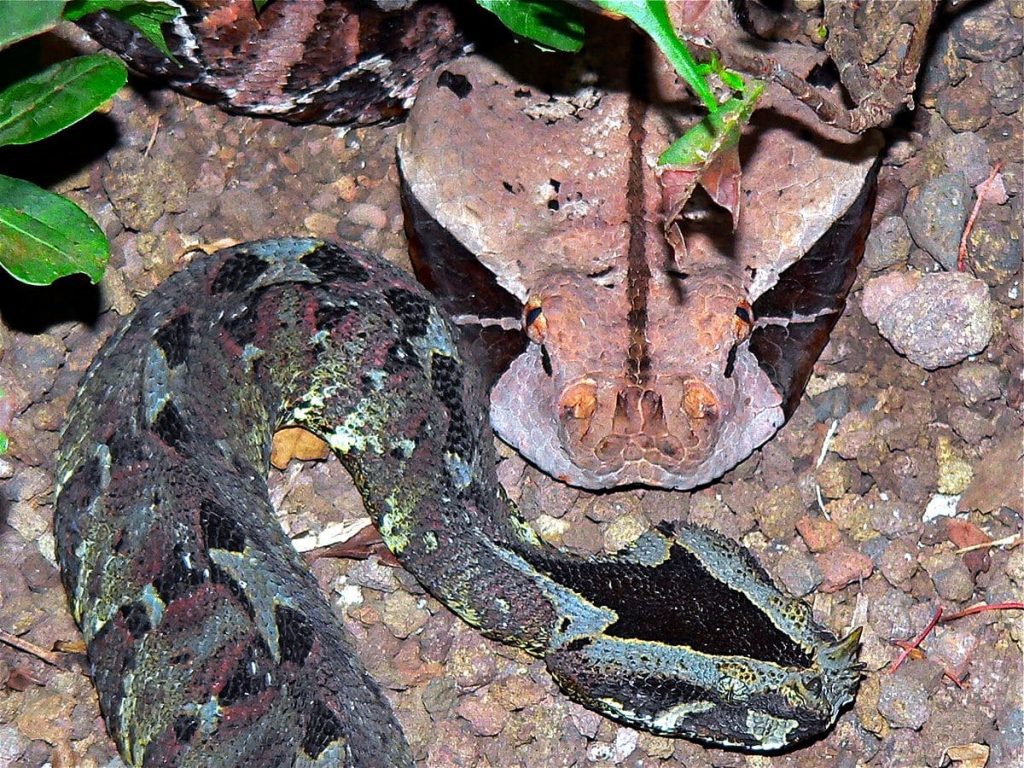
Image Source: Wikimedia
9. Grass Snake
Grass Snakes is one of the types of snakes that is non-venomous in nature and mostly seen in the water and feeds almost exclusively on amphibians. Talking about the appearance, snakes come with dark green or brown in colour with a yellow collar behind the head and hence also known as ringed snakes. The colour of the snake varies from grey to black with darker colors mostly seen in the colder regions. Teh underside of the snake comes with irregular blocks of black in the body.
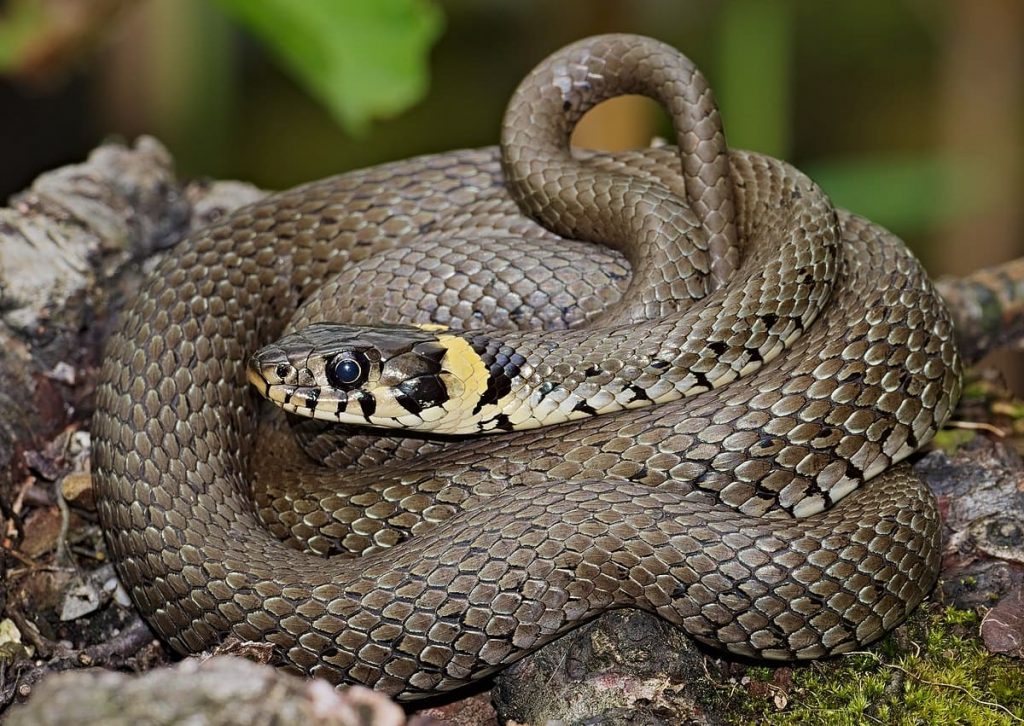
Image Source: Wikipedia
10. Tiger Snake
Tiger Snakes are one of the highly venomous snakes mostly seen in the southern regions of Australia that includes coastal islands, such as Tasmania. Regarding appearance, these snakes are highly variable in appearance and have skin pattern similar to that of tiger and hence the name. The population of the snake belongs to the genus Notechis and diverse characteristics can be seen in the further subdivisions of this group. It used to give birth to 20 to 30 live young and there exist with an exceptional record was made of 64 from an eastern female.
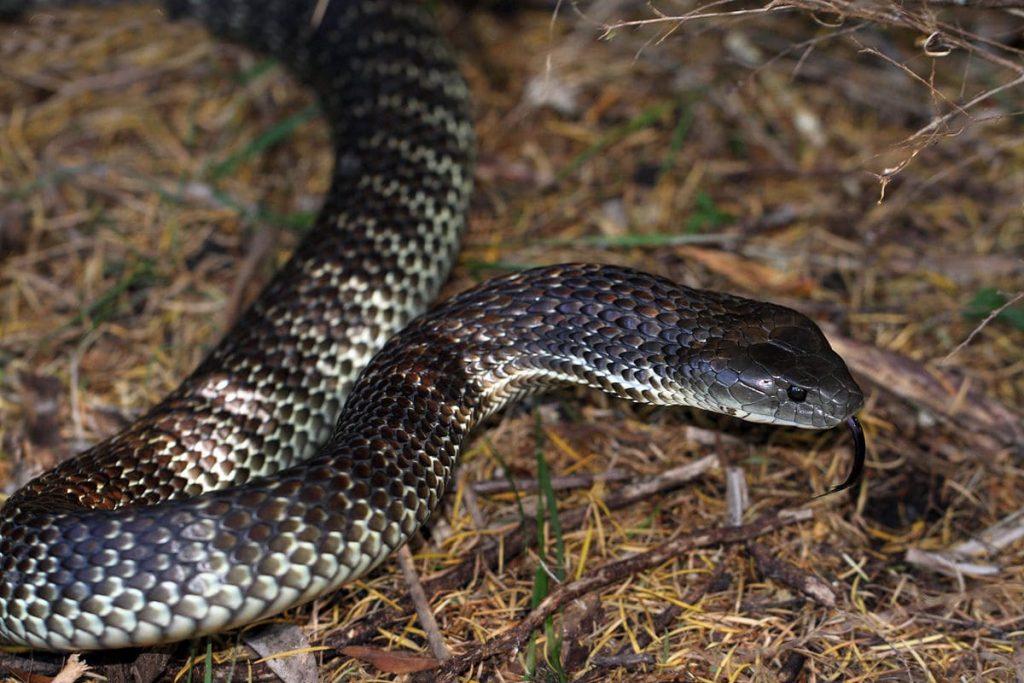
Image Source: Wikimedia
11. Indian Cobra
Indian Cobra is also known as the spectacled cobra, Asian cobra or binucleate cobra mostly seen in the region of the Indian subcontinent of India, Pakistan, Bangladesh, Sri Lanka, Nepal. All cobra species can be easily identified by the quite impressive hood which is expanded when the species feel threatened. The shape of the head is elliptical and very slightly distinct from the neck. The species can grow upto 1 to 1.5 metres in length. It could be seen in the high altitudes of over 2,000 metres and even in extreme desert regions.
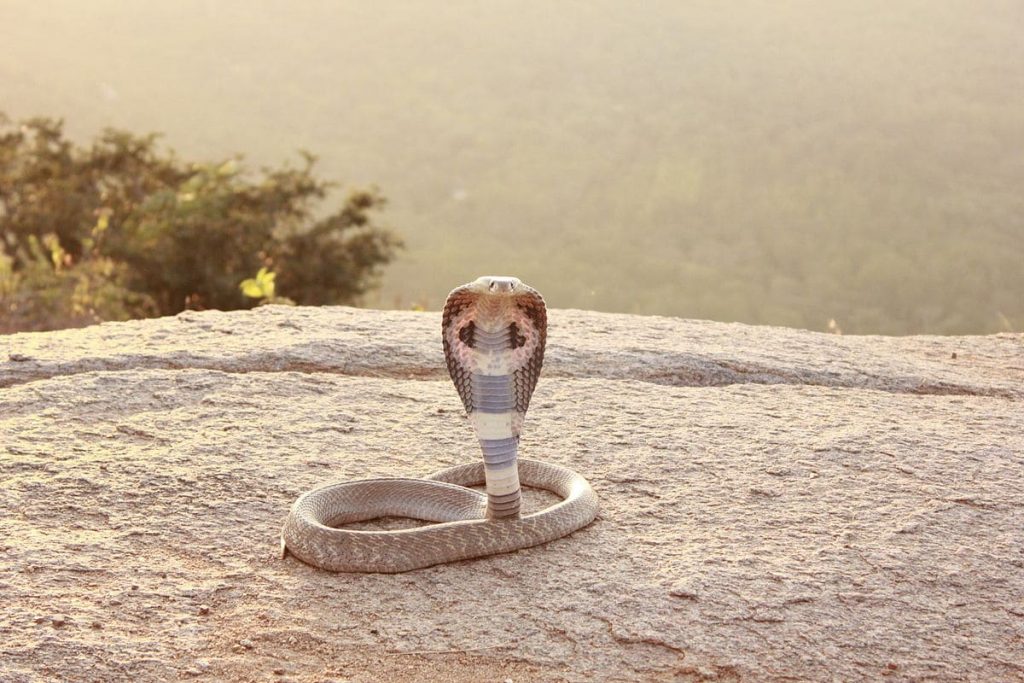
Image Source: Wikimedia
12. Cape Cobra
Cape Cobra which is also known as the yellow cobra is highly venomous species of cobra native across southern African region The only predators of the species are birds of prey, honey badgers and some species of mongoose. In South Africa, it is also known as the “geek slang” which means yellow snake and “bruinkapel” which means brown cobra in the country. This species has no known subspecies and can grow upto 1.2 to 1.4 metres long, however, Males are slightly larger than females.
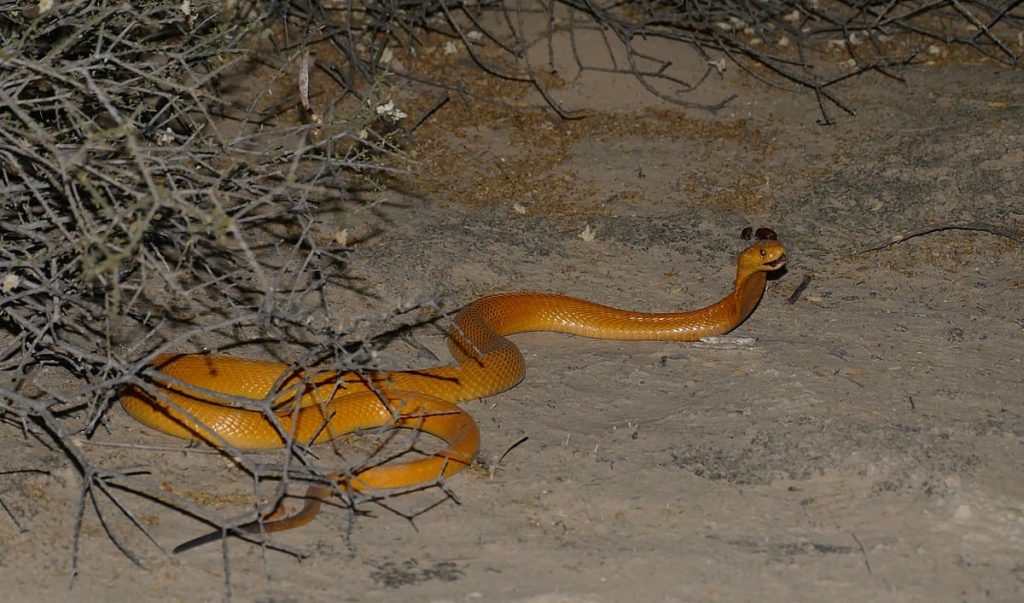
Image Source: Wikimedia
13. Eastern Green Mamba
Eastern Green Mamba is one of the highly venomous snake species mostly seen in the coastal regions of southern East Africa. It was first described by Scottish surgeon and zoologist Andrew Smith in the year 1849. It can grow upto d 2.0 metres (6.6 ft) in length, howvever, Female species are slightly larger than males. The venom of the species consists of both neurotoxins and cardiotoxins. The symptoms of the bite include swelling of the bite site, dizziness and nausea along with difficulty breathing, swallowing and an irregular heartbeat that can lead to respiratory paralysis.
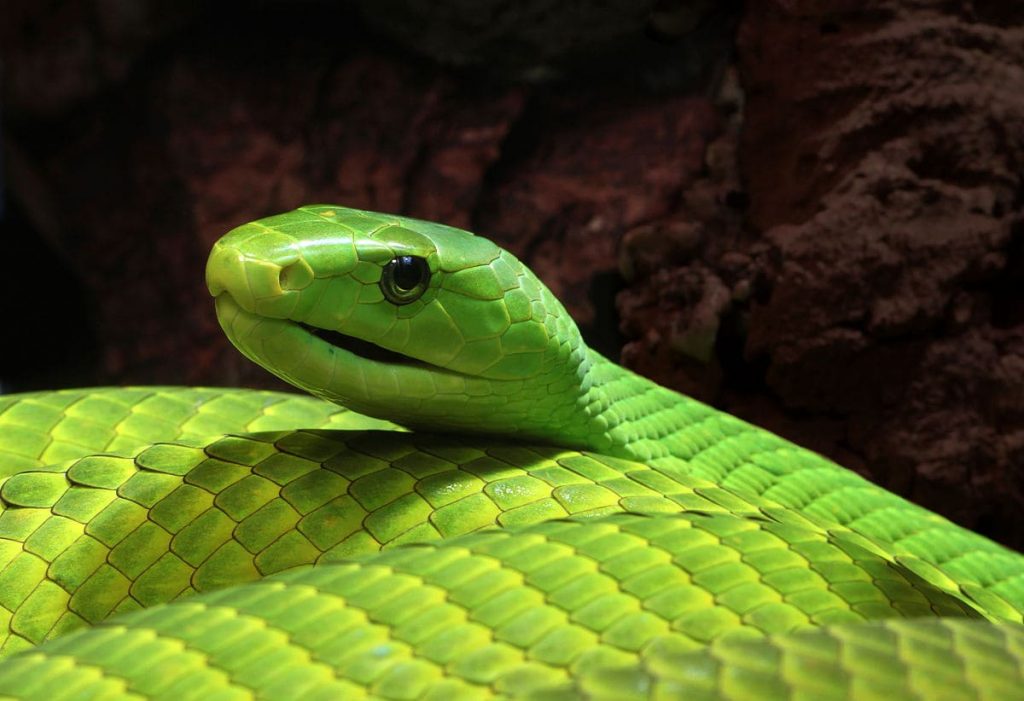
Image Source: Wikimedia
14. Egyptian Cobra
Egyptian Cobra belongs to the family Elapidae and can grow upto 1.4 metres (4.6 ft) in length but the largest one noticed was 2.59 metres (8.5 ft). It is mostly seen in the North Africa north of the Sahara, West Africa to the south of the Sahara and east to Kenya and Tanzania. The species loved to thrive in dry to moist savannas and arid semi-desert regions along with some water and vegetation. The venom of the species includes neurotoxins and cytotoxins that directly impact the nervous system by stopping the nerve signals from being transmitted to the muscles which eventually causes respiratory failure.
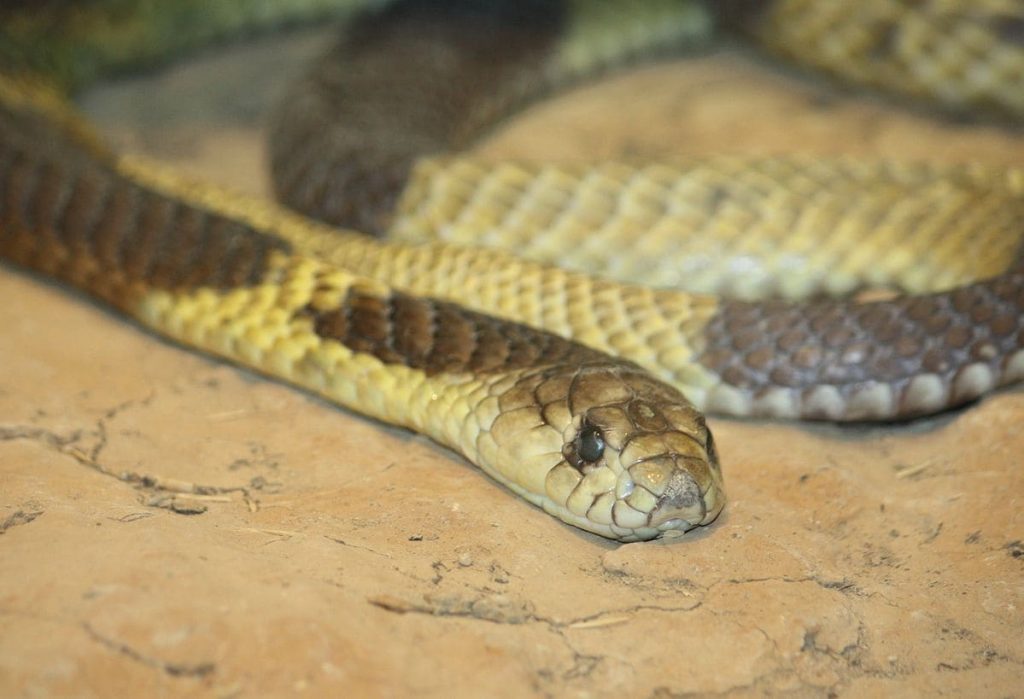
Image Source:Wikimedia
15. Red Spitting Cobra
Red Spitting Cobra is a cobra species which is endemic to Africa. It can grow upto 0.7 and 1.2 meters in length, however, the maximum known species recorded with a length of 1.5 meters. The species is distributed in the regions of Djibouti, Eritrea, Somalia, southern Egypt, northern and eastern Ethiopia, and northern Tanzania and northern Sudan. The venom of the species includes neurotoxins and cytotoxins that can cause slight pain and numbness of the lips, fingers and tongue.
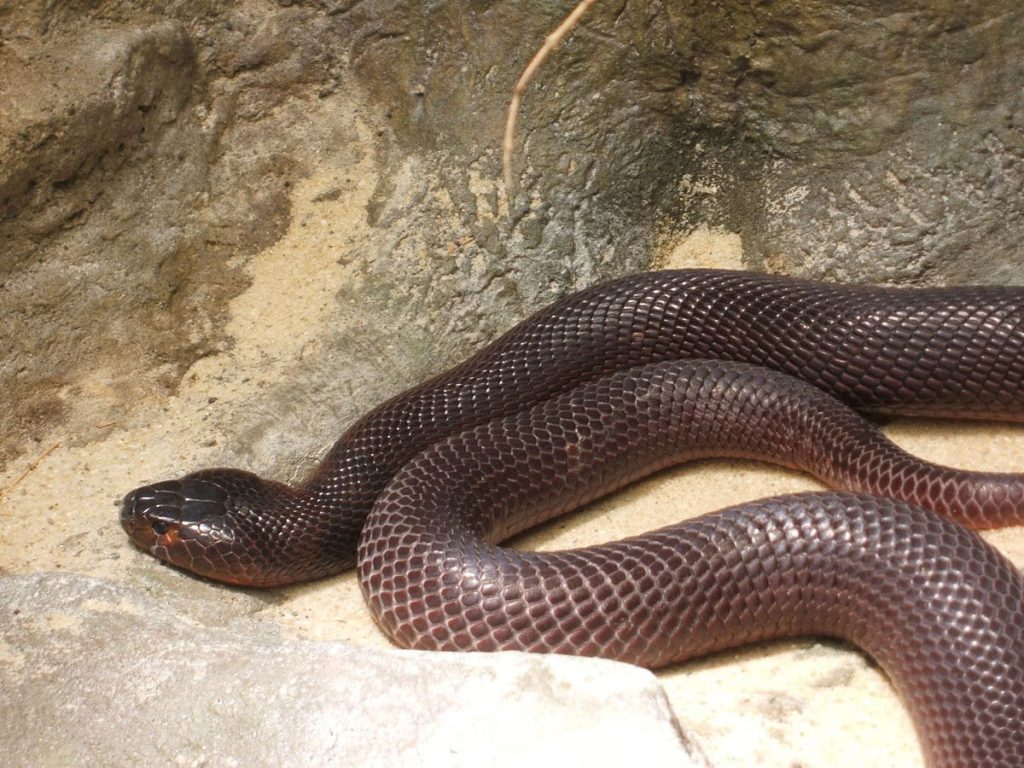
Image Source: Wikimedia
16. Mozambique Spitting Cobra
Mozambique Spitting Cobra is a cobra species native to Africa. It is widely seen in the region of Angola, Botswana, Mozambique, Namibia, South Africa, Tanzania, Zambia and Zimbabwe. The adult species can be grown between 90 cm – 105 cm and the largest recorded species is a male of 154 cm long. The species love to thrive in tropical and subtropical Africa. It likes to eat birds, eggs, small mammals, and sometimes insects.
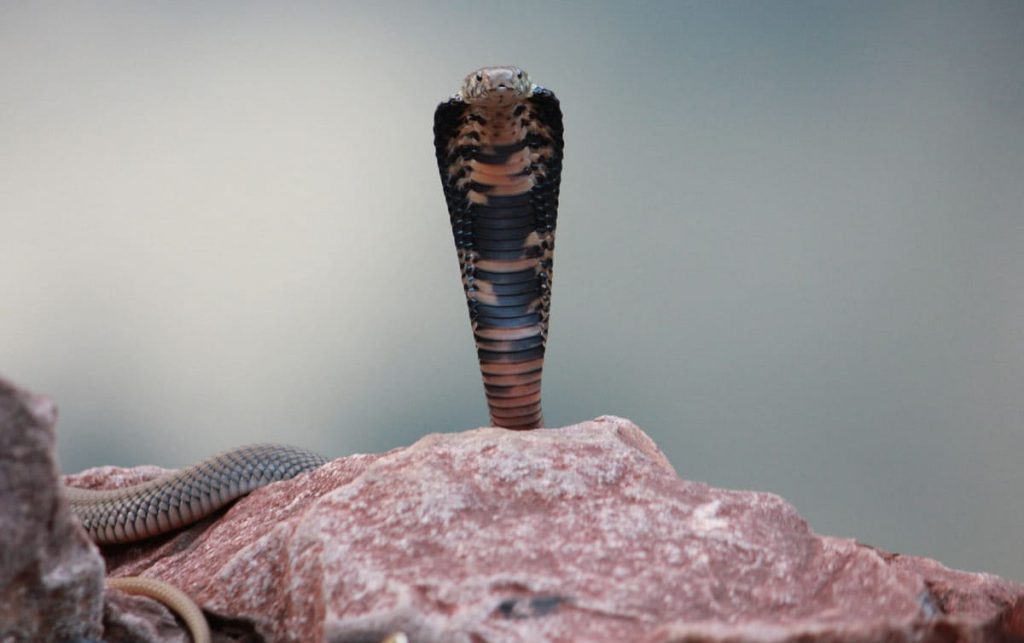
Image Source: Wikimedia
17. Inland Taipan
Inland Taipan is a venomous snake species that was discovered in the 19th century, howvever, it has been rediscovered and examined after 90 years. It is native to semi-arid areas of Central and East Australia. According to the Australian sources, the species is rare in the Queensland region, howvever, it is in excess in South Australia. It can reach upto 6 to 8 feet in length. The snake species is also known as “fierce snake” because of its potent venom, howvever, it is not aggressive by nature. The average life span of species is 20 years in the captivity.
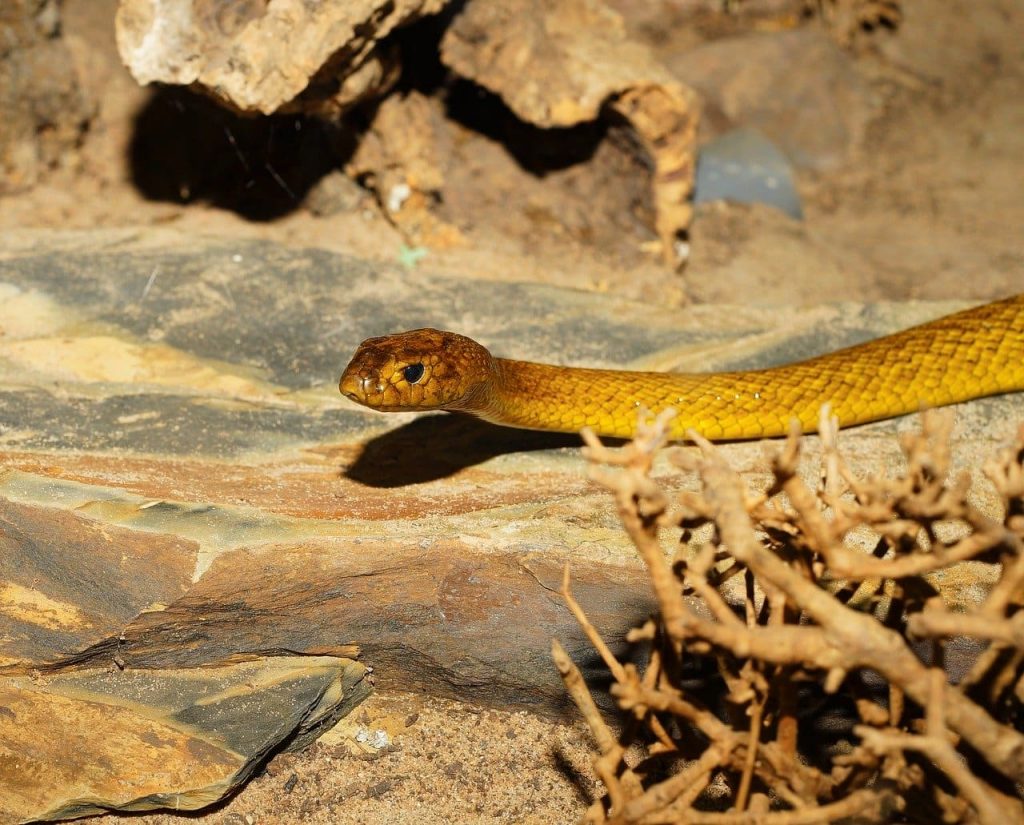
18. Copperheads
Copperheads are a snake species mostly seen in the United States south to northern Costa Rica. As of now, only 8 species has been recognized and common names include cottonmouths, copperheads, and cantils. There are few species that are known as “moccasins” or “moccasin snakes”. It can be easily recognized by the broadhead with short fangs and mostly seen near the sources of water.
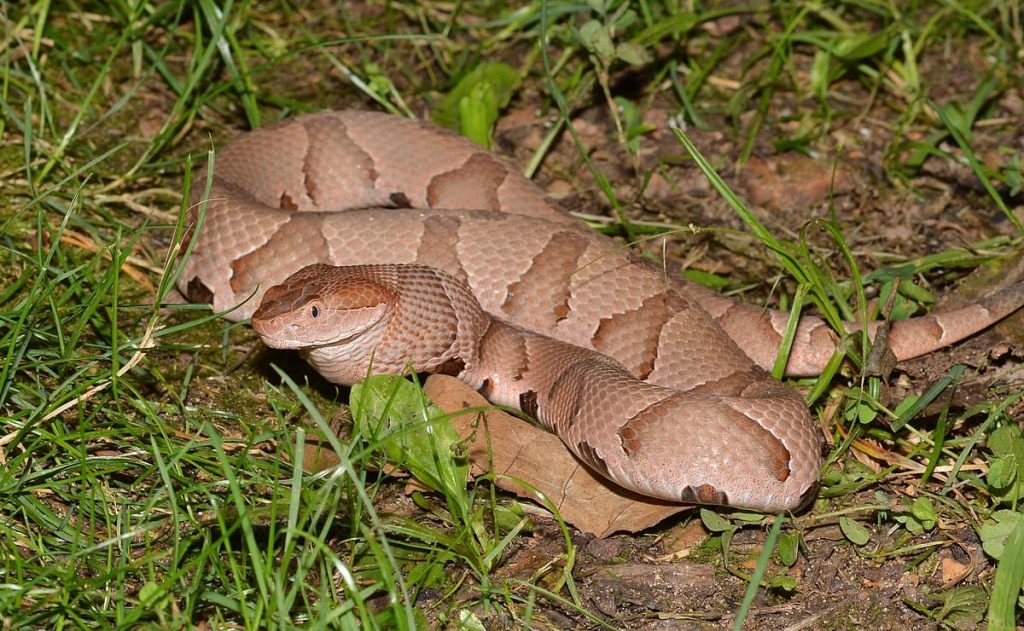
Image Source: Wikimedia
19. Rattlesnakes
Rattlesnakes are one of the types of snakes mostly seen in the arid and desert rocky areas, howvever, they are also seen in forests, prairies and swampy habitats. Currently, there are 32 known species of rattlesnakes and almost all of them are listed as threatened and endangered species. The average size of the rattlesnake is 3 to 4 feet long, howvever, it depends on the snake species. It is not very colourful like other species because they need to camouflage to their environment. It is carnivorous and mostly hunts on rats, mice and small birds usually.+
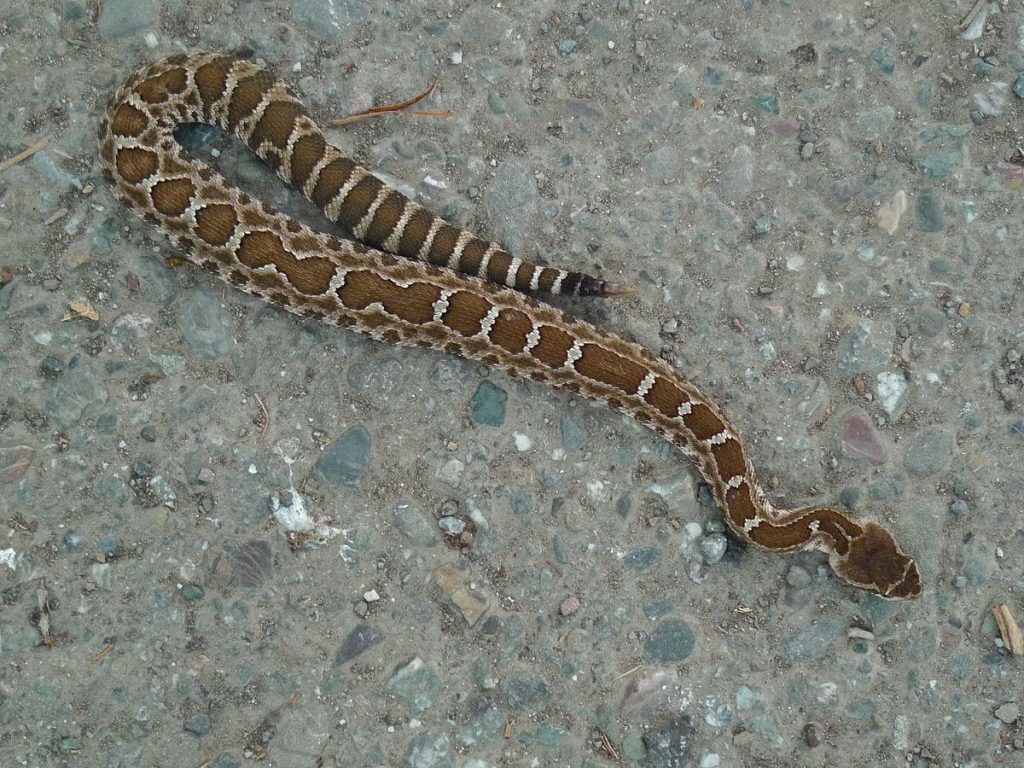
Image Source: Wikimedia
20. Water Moccasin
Water Moccasin is also known with common names such as cottonmouth, swamp moccasin, black moccasin, and simply viper. Its is a pit viper snake species that belongs to the family Viperidae. The species is native to the southeastern United States and it is the only venomous snakes among North America’s water snakes. The adult species can grow upto 80 cm in length, howvever, females are typically smaller than males.
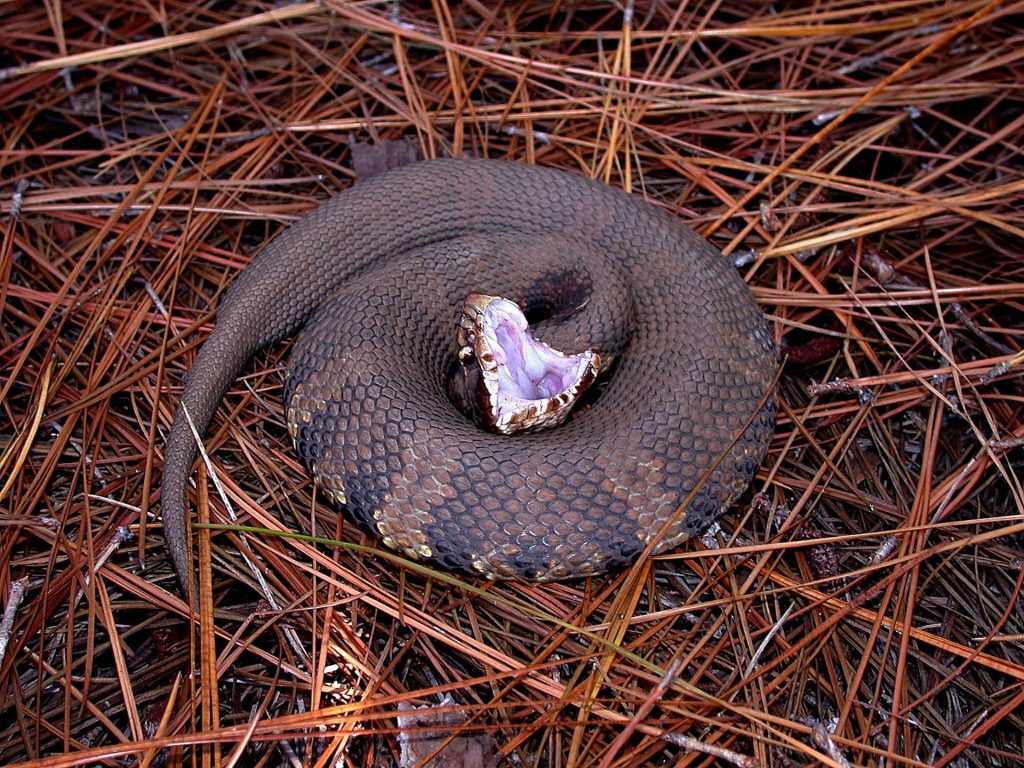
21. Bushmaster
Bushmaster is also one of the types of snakes that are listed in the category of venomous pit vipers and mostly seen in the forested areas of Central and South America. Currently, only 4 species has been recognized and the average length in adults is 2 to 3 m, howvever, they can even grow upto 4 m and hence it is the longest venomous snake in the Western Hemisphere. This is also one of the longest vipers in the world and largest among the three species that has been recognized.
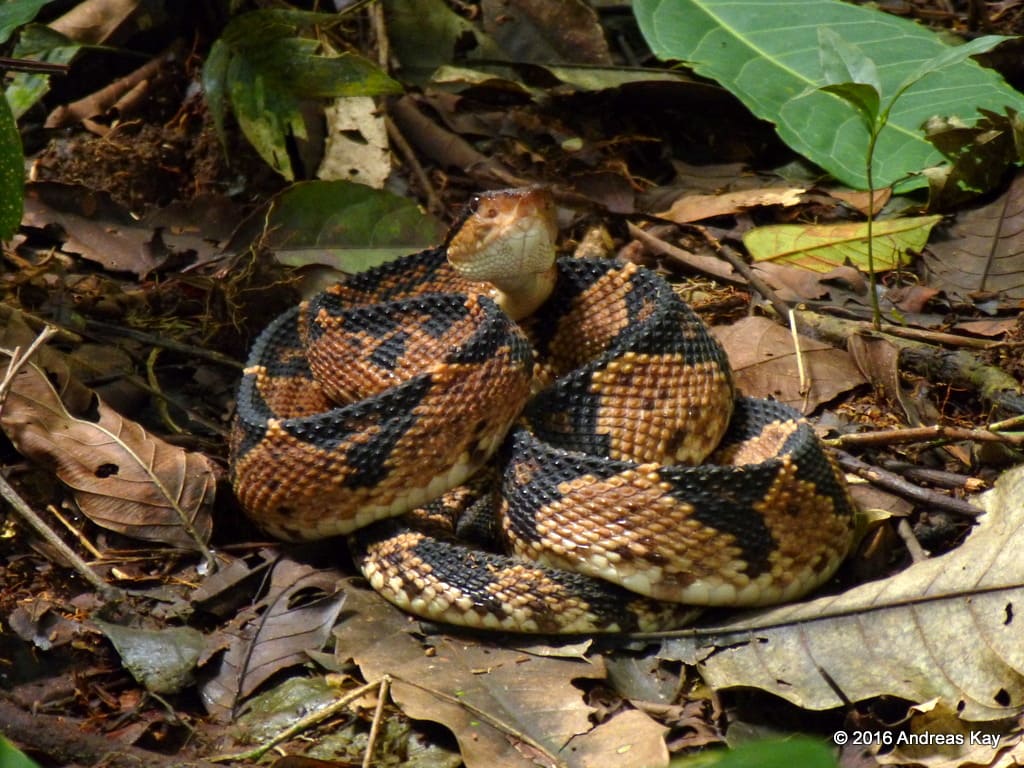
Image Source: Andreas Kay(Flickr)
These are some of the major types of snakes that are seen across the globe. Kindly share and post your comments.



